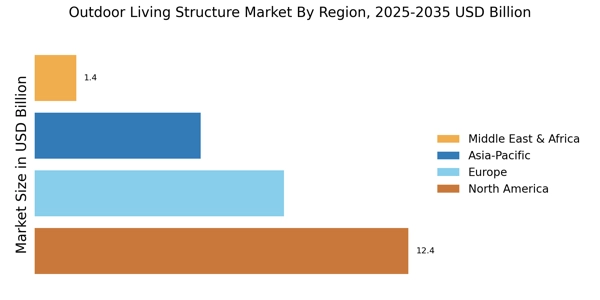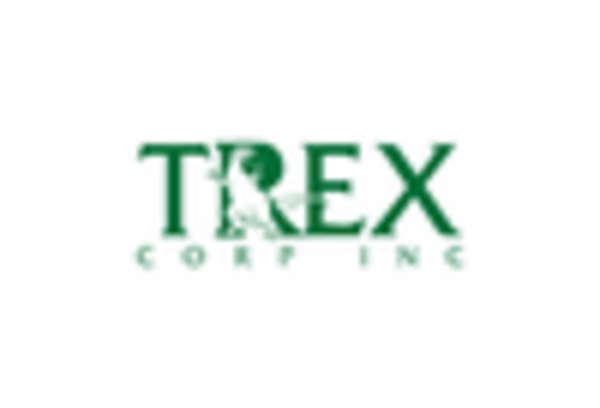Increased Focus on Sustainability
Sustainability has become a pivotal driver in the Outdoor Living Structure Market, as consumers increasingly prioritize eco-friendly materials and practices. The demand for sustainable outdoor structures, such as those made from recycled or responsibly sourced materials, is on the rise. This shift is not merely a trend but appears to be a fundamental change in consumer behavior, with many willing to pay a premium for environmentally friendly options. Market data indicates that the segment of consumers prioritizing sustainability in their purchasing decisions has grown significantly, suggesting that manufacturers and suppliers must adapt to these preferences to remain competitive in the outdoor living structure market.
Urbanization and Space Optimization
Urbanization is significantly influencing the Outdoor Living Structure Market, as more individuals reside in densely populated areas with limited outdoor space. This demographic shift has led to an increased focus on optimizing small outdoor areas, such as balconies and rooftops, for recreational use. The demand for compact and multifunctional outdoor structures is on the rise, as consumers seek to maximize their limited space. Market data suggests that the segment of outdoor living structures designed for urban environments is expected to grow rapidly, indicating a shift in consumer needs and preferences. This trend presents opportunities for innovation in design and functionality within the outdoor living structure market.
Rising Demand for Outdoor Living Spaces
The Outdoor Living Structure Market experiences a notable surge in demand for outdoor living spaces, driven by changing consumer preferences. Homeowners increasingly seek to extend their living areas into the outdoors, creating functional spaces for relaxation and entertainment. This trend is reflected in the growing popularity of patios, decks, and pergolas, which enhance property value and aesthetic appeal. According to recent data, the outdoor living structure market is projected to grow at a compound annual growth rate of approximately 5.5% over the next five years. This growth is indicative of a broader lifestyle shift towards outdoor leisure, suggesting that the market will continue to expand as more consumers invest in their outdoor environments.
Customization and Personalization Trends
Customization and personalization are emerging as key drivers in the Outdoor Living Structure Market. Consumers are increasingly seeking unique outdoor solutions that reflect their individual tastes and lifestyles. This trend is evident in the rising demand for bespoke designs and tailored features, such as custom-built decks and personalized outdoor kitchens. Market analysis shows that businesses offering customizable options are likely to capture a larger share of the market, as consumers value the ability to create spaces that resonate with their personal style. This shift towards personalization indicates a growing opportunity for manufacturers to differentiate themselves in a competitive landscape.
Technological Advancements in Outdoor Structures
The integration of technology into outdoor living structures is transforming the Outdoor Living Structure Market. Innovations such as smart lighting, automated shading systems, and outdoor entertainment systems are becoming increasingly prevalent. These advancements not only enhance the functionality of outdoor spaces but also appeal to tech-savvy consumers looking for convenience and luxury. The market for smart outdoor products is expected to witness substantial growth, with projections indicating a potential increase of over 20% in the next few years. This technological evolution suggests that companies in the outdoor living structure market must invest in research and development to meet the evolving demands of consumers.


















Leave a Comment